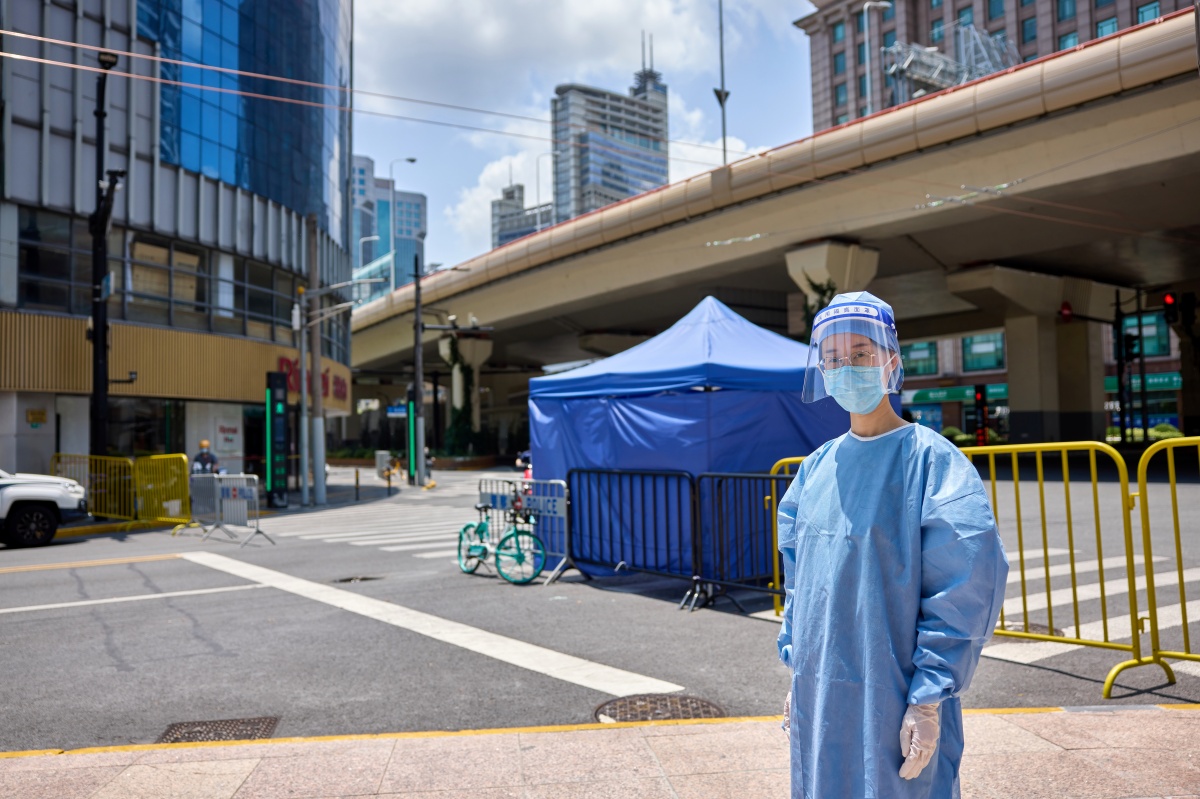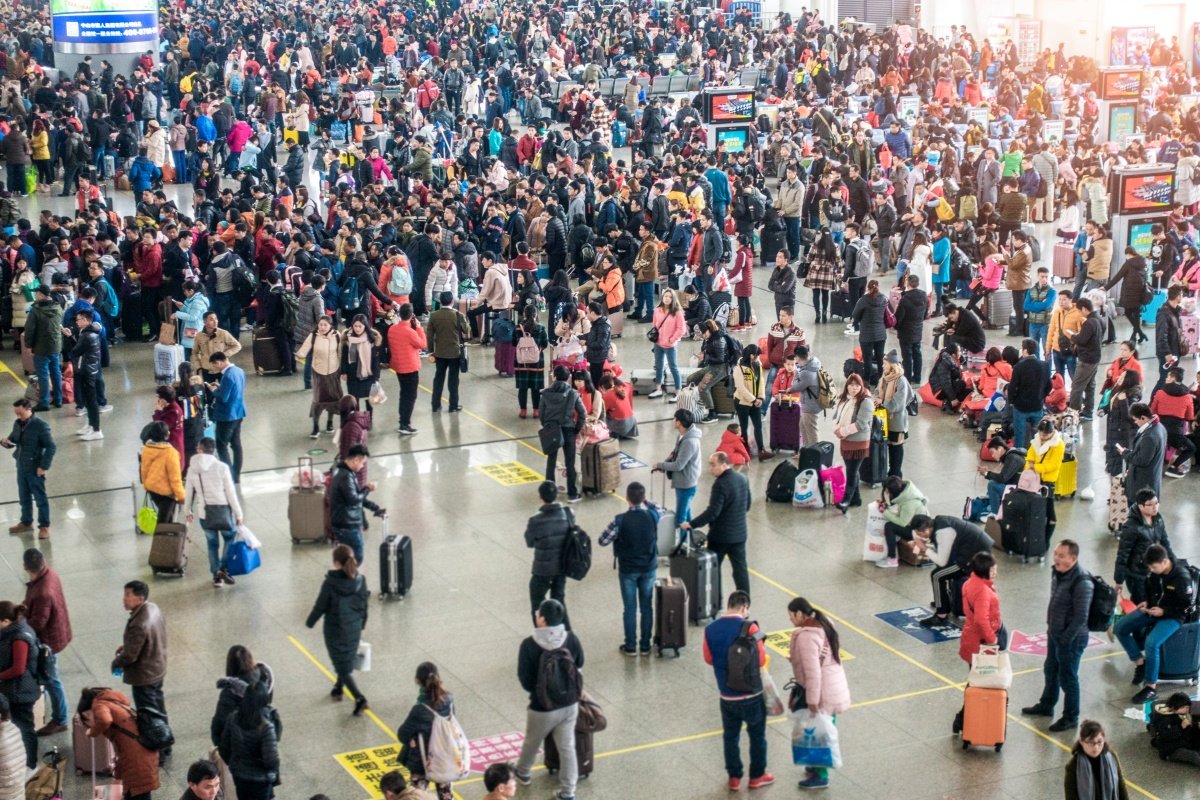This Text was written by a TecMundo columnist; finally learn more.
According to Chinese officials from the National Health Commission, between December 8, 2022 and January 12, 2023, there were 59,938 COVID-19 deaths, most of them in elderly people with comorbidities. The peak of deaths exceeded 4,000 per day and the number of applications to outpatient clinics approached 3 million per day.
Many questions came to my mind regarding this scenario:
1. How serious is the situation in China?
2. Why is China experiencing the worst of the epidemic so long after the rest of the year?
world?
3. Do the vaccines used in China not work?
4. Will the situation get worse?
How serious is the situation in China?
I answer the first question: Of course it’s serious! Adaptations were required to expand service capacity, similar to the reality experienced in many countries. In an image circulating on the Internet, it is possible to see the intensive care unit set up in a conference room.
The peak of deaths in absolute numbers is equivalent to deaths recorded by most affected countries such as India at 4,500 per day and the United States at 4,400 per day. The Brazilian peak was 4,150 deaths per day. All happened in the first half of 2021, which brings us to the second question. But before that, let’s better contextualize the current seriousness of the situation in China.
Given China’s population of 1.4 billion, the peak of deaths/settlers is around 2.85 per million people, well below the 20/million peak faced by the United Kingdom, Czech Republic and Romania. By comparison, the peak of deaths reached 15/million population in Brazil and 10/million population in the USA. However, we cannot underestimate the present moment, which is alarming given China’s history during the pandemic and the fact that it is the most populous country in the world.
While it seems that China has not reached such high death/settler levels, it is necessary to consider the fragility of data that lacks transparency. The Chinese data has been criticized by the international community for classifying deaths from individuals with comorbidities. Additionally, published data are likely to be underestimated, as they are likely to not include deaths that occur at home or in rural areas.
Why is China experiencing the worst of the epidemic so long after the rest of the world?
The explosion of cases in China, which culminated in current hospitalizations and deaths, was driven by several factors:
Sudden loosening of restraint measures – China has adopted the “covid zero” policy since the beginning of the pandemic. This strategy, championed by much of the world’s scientific community, is already agreed that it is not the best long-term strategy. Another consensus is gradual weaning where some restraint strategies are adopted.
vaccination and viral circulation. China did not do this. It maintained severe restrictions for almost three years, intensifying them during times of virus escape. It turned out that it was not the best way to deal with the epidemic epidemiologically, nor was it the best way to deal with the social aspect. Due to the psychological and social harms of this policy in the long run, including popular revolts, the public stopped supporting the government after a point.
With this, China turned the switch and quickly increased the effective breeding rate of a strain even more contagious than the originals.
Low vaccination compliance of the elderly – In China, the first vaccines were released for adults, not for the elderly. Under the pretext that there is not enough data to prove efficacy and safety in this subgroup, this fact has resulted in vaccines being discredited precisely by the most vulnerable segment of the population against covid. Despite progress in the proportion of older people on a full regimen in 2022, a third had not yet received their booster dose until November last year. The situation is even worse for the population over the age of 80. The proportion of those who had not yet received a booster vaccine was 60%.
low herd immunity – It is already known that vaccination provides a serious reduction in the severity of the disease when infected, but its effectiveness in controlling viral circulation is low. As the virus enters the circulation and causes infections, there is a strengthening of the immune protective effect. So far, in the case of SARS-CoV-2, a strong collective immunity has been established through the combination between vaccination and viral circulation.
The main idea would be to vaccinate most of the population with the vaccine so that when exposed to the virus they have less chance of complications and even more immunity. Most countries were more
In the pre-vaccination period and at the start of vaccination, priority groups are aggressive in restrictive measures until they receive the immunizer. As the population was vaccinated, tolerance to viral circulation increased. Of course, although this level of tolerance varies from country to country and according to the timing and form of changes in restrictive interventions, most
gradual relaxation with some occasional setbacks.

China’s plan was to vaccinate everyone before they relaxed the measures. It’s a good plan, but not well executed. First, there are unvaccinated pockets among the elderly. Between 80+, ¼ didn’t even take the first dose, ? did not receive the second, and more than half did not receive reinforcements. In this context, it was quite predictable that problems would arise, as there was a history of low viral circulation in his area and pockets among the unvaccinated elderly. Second, with evacuation, the case/hospitalization and death curve will be shorter, but will be more intense. This point is debatable, as it needs to be more agile if there are conditions to adequately meet demand. But I don’t think it’s ideal to adapt an intensive care unit to a meeting room. In addition to not specifying the structure, there probably wasn’t a team with enough experience to deal with these cases. Even in the critical phase of the epidemic, many countries have suffered from these factors.
Do the vaccines used in China not work?
Yes they do. However, it is important to contextualize the differences regarding the rest of the world. The main vaccine platforms used were based on inactivated virus. There are other platforms approved in the country, such as proteins and viral vectors, but these have been used on a smaller scale. It is known that the efficacy of mRNA-based vaccines is superior to inactivated virus vaccines, including currently circulating variants. Therefore, one way to increase population protection would be the integration of other vaccine platforms, which will act as a complement to the plan carried out thus far. Something similar to that done in Brazil has rightly bet on heterologous schemas.
What to expect from the future?
The good news is that it looks like the worst is over. Chinese reports show that the peak of cases occurred at the end of December 2022, and within a month, demand for COVID-specific clinics has already decreased by more than 90%. The peak of deaths occurred in early January this year, a 79% reduction from the peak. There was also a 72% reduction in severe cases. According to the report’s authors, the estimate released on January 25 this year is that 80% of the population is already infected with SARS-CoV-2. Despite the necessary skepticism when analyzing this data, it makes sense.
One thing to note is that exposure to this virus is not homogeneous and, for example, rural areas far from major centers are probably not so heavily exposed. Due to the Chinese New Year festivities that started on January 21, it should not be forgotten that there has been an increase in domestic travel as families gather in the cities they come from during this period. That already raises some concerns about a possible rebound after this first wave since China fully opened up.
Knowing the variables that affect the transmission of SARS-CoV-2 is crucial to understanding what is currently happening in China and the rest of the world.
Overall, the level of sensitivity of the population is by far what influences the current epidemiological dynamics. The factors affecting this are the immune response after vaccination, infection or both, and occasional variables, respectively. These variables explain the new waves of cases and, fortunately, the decrease in severity that has occurred over the years.
The long-term trend is for a global confluence of immunity, perhaps as over the years social interactions and travel have become uniformly normalized. There will be a time when we can say categorically that we have passed from a pandemic to an endemic.
Is endemic a good thing? Not necessarily.
Bernardo Almeidacolumnist for Technology Worldis an infection specialist and chief medical officer at Hilab, a healthcare technology that developed Hilab, the first decentralized laboratory to use remote laboratory testing. He is an Infectious Diseases specialist from the Federal University of Paraná (UFPR), residing in the fields of Internal Medicine, Internal Medicine and Infectious Diseases at the Hospital de Clínicas; Graduate student in Internal Medicine in the field of Infectious Diseases – Epidemiology of Severe Acute Respiratory Syndromes in Adults at the same university. He has experience in clinical medicine, infectious and parasitic diseases, as well as participating in research groups on respiratory viruses.
Source: Tec Mundo
I’m Blaine Morgan, an experienced journalist and writer with over 8 years of experience in the tech industry. My expertise lies in writing about technology news and trends, covering everything from cutting-edge gadgets to emerging software developments. I’ve written for several leading publications including Gadget Onus where I am an author.











